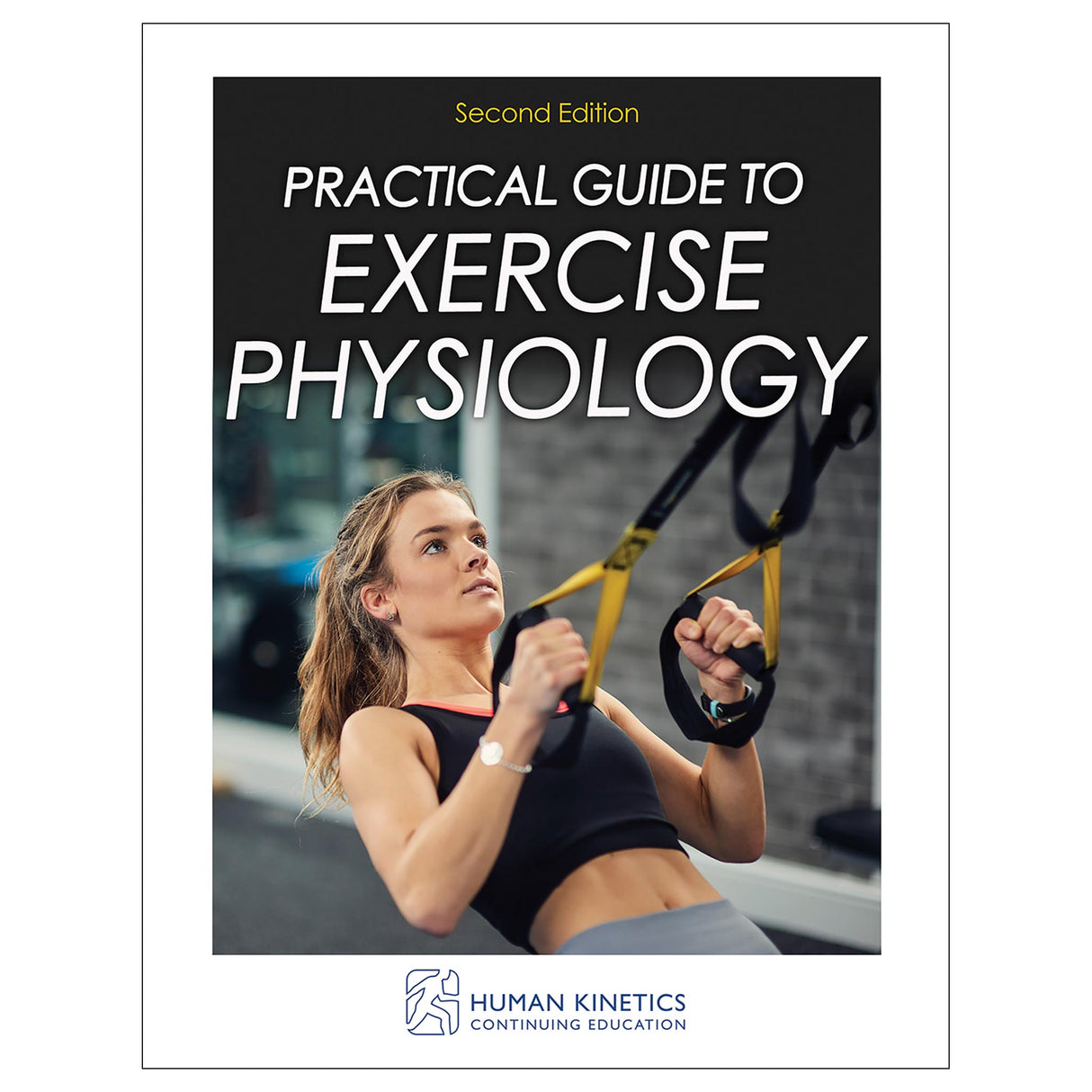Practical Guide to Exercise Physiology 2nd Edition Online CE Exam With Print Book
Author: Human Kinetics
$166.95 CAD
Human Kinetics strongly recommends that you complete your exam within the calendar year of your date of purchase to ensure approved credits do not expire for your organization.
- Practical Guide to Exercise Physiology, Second Edition, book
- Online continuing education exam
Intricate physiological processes responsible for how the body responds and adapts to physical activity are described in an accessible manner so you can easily understand and select appropriate training programs for your clients. Medical artwork puts these complex systems into a digestible visual context. These systems are then applied to real-world practice and training principles that are beneficial to specific body systems to achieve desired results.
Part I reviews human physiology fundamentals, including muscles and muscle adaptation, bioenergetics, and the cardiorespiratory system. Part II applies these scientific concepts to training programs designed for specific fitness goals, including weight loss, improvements in strength and muscle mass, speed and power, and aerobic endurance. Part III outlines special considerations for training, including working with pregnant women, children, and older adults as well as exercise adjustments for changes in temperature and altitude.
You’ll get content on trending fitness concepts such as HIIT, periodization, and detraining. Performance Nutrition Spotlights provide advice and tips on using nutrition to support adaptations and improve performance. The Index of Common Questions From Clients collects the most common inquiries from clients and points to the corresponding chapter where each of those topics is covered, helping you quickly access information.
After reading the book, certified professionals can take the companion CE exam to earn continuing education credits.
Learning Objectives
- Identify the important structural components of skeletal muscle.
- Describe how a motor unit activates a muscle cell, resulting in a muscle contraction.
- Differentiate between type I and type II muscle fibers.
- Identify the various pathways used in the production of ATP.
- Explain how carbohydrates provide an optimal source for energy in muscle cells.
- Describe the importance of amino acids and vitamins in energy and exercise.
- Explain how CO2 is an important component in oxygen transport.
- Describe energy expenditure and how it relates to exercise.
- Explain the importance of glycogen storage and depletion in terms of exercise demands.
- List the effects of dehydration.
- List the recommendations for hydration.
- Explain the scientific principles that form the framework of a successful training program.
- Explain the physiological adaptations to various training programs.
- Differentiate between strength, power, and endurance.
- Describe each type of muscle contraction.
- Explain why certain sports have a higher energy expenditure than others.
- Define the term female athlete triad.
- Describe the thermal effect of food.
- List different forms of interval training.
- Explain VO2max and how it relates to exercise.
- Explain the upper limit for cardiac output.
- List the most common environmental stressors that affect exercise.
- List the guidelines for training for the pediatric and young adult populations.
- Explain the effects of aging on the body's ability to exercise.
Audience
Personal trainers, strength and conditioning professionals, athletic trainers, and other certified fitness professionals.Chapter 1. Muscles Move Us
How Do Muscles Work?
How Do Muscles Adapt to Training?
How Do Muscle Cells Get Bigger and Stronger?
Chapter 2. Food Really Is Fuel
From Food to Energy
How Do Nutrients Fuel Muscle?
What About Vitamins and Minerals?
Water Is a Nutrient, Too
Chapter 3. Muscles Need Oxygen
How Does Oxygen Get to Muscles?
How Does Oxygen Use Relate to Metabolic Rate?
How Does Training Help the Body Use More Oxygen?
Oxygen Delivery and Performance Enhancement
Chapter 4. Fatigue: What Is It Good For?
What Causes Fatigue?
What’s the Difference Between Fatigue and Overtraining?
What Role Does Fatigue Play in Adaptations to Training?
Part II. The Science of Training Program Design
Chapter 5. Principles of Designing Training Programs
What Are the Basics of Program Design?
What Makes an Effective Training Program?
Training Terms
Chapter 6. Training to Improve Strength and Muscle Mass
How Do Strength and Mass Increase?
What’s the Best Way to Gain Strength and Mass?
What’s the Role of Nutrition?
Detraining and Retraining
Chapter 7. Training for Body Weight Control
Weight Loss Is All About Energy Balance
Why Do Some People Have Difficulty Losing Weight?
What’s the Best Way to Lose Fat but Protect Muscle Mass?
Chapter 8. Training for Speed and Power
What Are Speed and Power?
What Adaptations Are Needed to Improve Speed and Power?
What Kinds of Training Improve Speed and Power?
What Does a Speed and Power Training Session Look Like?
Chapter 9. Training for Aerobic Endurance
What Are the Main Adaptations to Aerobic Training?
What’s the Best Way to Improve Aerobic Endurance?
Should Endurance Athletes Engage in Strength Training?
Why Is Endurance Capacity Important for Sprinters and Team-Sport Athletes?
Part III. Special Considerations
Chapter 10. Heat, Cold, and Altitude
Exercise in the Heat Impairs Performance
Cold Stress Chills Performance
Exercise at Altitude
Chapter 11. Training Children and Pregnant Women
Do Children Respond Differently to Exercise Training?
Can Children Improve Strength With Training?
Should Women Exercise During Pregnancy?
Chapter 12. Training Older Adults
What Changes With Aging?
How Can Exercise Training Benefit Older Adults?
What Considerations Should Be Part of Training for Older Adults?
Index of Common Questions From Clients





